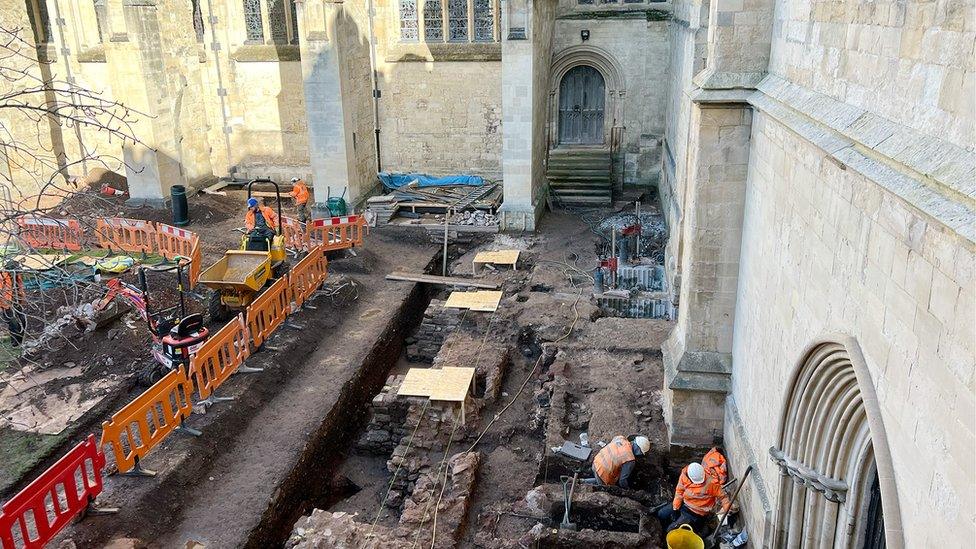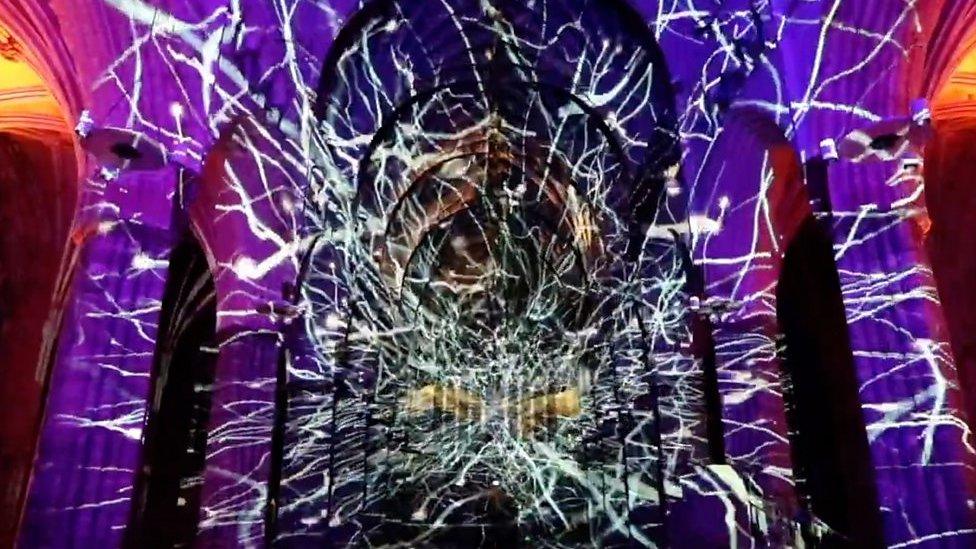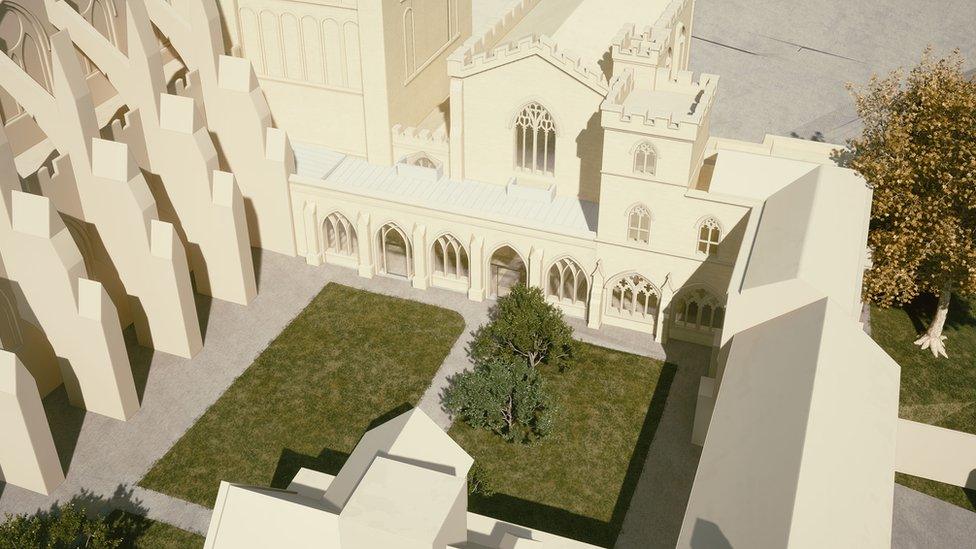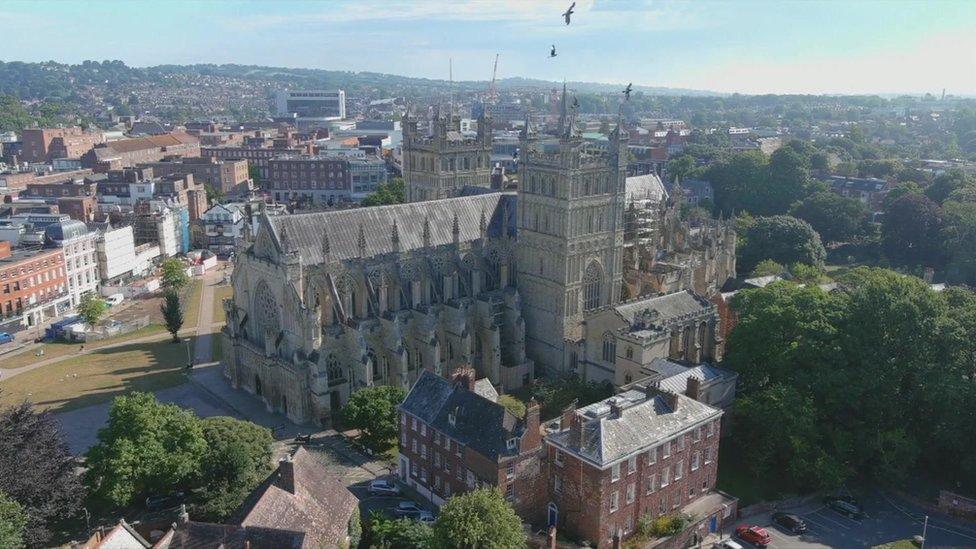Exeter Cathedral Roman remains unearthed by archaeologists
- Published

The Roman structures have been revealed as part of a major building project
Archaeologists investigating Exeter Cathedral's historic cloister garden have made new discoveries from the Roman period.
They include remains of an early Roman street and timber buildings, and a wall of a Roman town house that was later overlain by the foundations of the medieval cloisters.
Archaeologists say they reveal "new clues to Exeter's distant past".
The work is part of a project to build a new cloister gallery.
It will be built upon the medieval foundations of the original cloisters, which were demolished in 1656.
The building will connect the cathedral with its Chapter House and Pearson buildings.
Cathedral archaeologist, John Allan, said the finds helped to build a clearer picture of how the site would have looked in Roman times.
"The street and early timber buildings date from circa AD 50-75, and formed elements of the Roman legionary fortress which underlies central Exeter," he said.
He explained they probably represented part of a long barrack building that extended towards the grant stone bath-house exposed under the Cathedral Green in the early 1970s.
"The later stone wall is part of a previously unknown town house of the 3rd and 4th Centuries," he added.
The work is being funded by Exeter Cathedral's 2020s Development Appeal, which aims to raise £10m on top of more than £6m it has already be given in grants and donations.
The cathedral said the funds would support essential improvements and a calendar of community activities and events designed make the ancient Devon landmark accessible and sustainable for the future.

Follow BBC News South West on Twitter, external, Facebook, external and Instagram, external. Send your story ideas to spotlight@bbc.co.uk.
- Published23 March 2023

- Published18 November 2022

- Published16 July 2022
